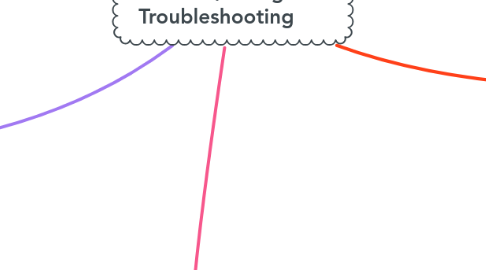
1. Introduction
1.1. H gain on low T side = H loss on high T side
1.2. Suitable HE type selected based on industrial std.
1.3. Selection & sizing correlate to each other; i.e. diff. equipment diff. calc.
2. Design Consideration
2.1. General
2.1.1. Fluid Allocation
2.1.1.1. Corrorsion
2.1.1.1.1. More corrosive fluid allocate to tube side - to reduce cost of expensive alloy/clad components
2.1.1.2. Fouling
2.1.1.2.1. Fluid with greatest fouling should be placed in tubes - better control on design fluid velocity and higher allowable velocity (easy cleaning)
2.1.1.3. Fluid temperature
2.1.1.3.1. if T is high enough to use special alloys, place higher T fluid in tubes - reduce shell surface T
2.1.1.4. Operating pressure
2.1.1.4.1. Higher P stream allocate to tube side - cheaper that high-P shell - the thickness tube is less for high internal P
2.1.1.5. Pressure drop
2.1.1.5.1. For same P drop, higher HT coefficient on tube side than shell side - fluid with lowest allowable P drop allocate to tube side
2.1.1.6. Viscosity
2.1.1.6.1. Obtain higher HT coefficient by allocating more viscous material to shell side (turbulent flow)
2.1.1.7. Stream Flow Rates
2.1.1.7.1. Allocate fluids with lowest flow rate to shell side - most economical design
2.1.2. Fluid Velocity
2.1.3. Stream
2.1.4. Pressure Drop
3. Major designs
3.1. Shell & tube HE (S&T HE)
3.1.1. common in oil refineries & large chem. processes, higher P
3.1.2. Consists of tube bundle enclosed in cylindrical casing (shell)
3.1.3. 1 fluid runs through tubes, another over them; HT between 2 fluids of diff. initial T
3.1.4. mostly 1/2/4 passes design
3.1.5. 2 basic types
3.1.5.1. fixed tube sheet unit
3.1.5.2. restrained tube sheet
3.1.6. counter-current - most efficient; biggest LMTD
3.2. Plate HE
3.2.1. plate & frame HE = gasketed plate HE
3.2.2. fluid flows through baffles
3.2.3. fluids separated by plates with large surface area - efficiency > S&T HE
3.2.4. Advantages
3.2.4.1. High thermal efficiency
3.2.4.2. Feasible plant design
3.2.4.3. Easy maintenance
3.2.4.4. Can rearrange/add/remove unit plates - for diff. service conditions
3.2.4.5. very wide range of total surface area, ≤15,000 square ft.
3.2.4.6. Low fouling
3.2.5. Disadvantages
3.2.5.1. Limited service T & P - ≤450°F & ≤335 psig
3.2.5.2. Gaskets impose restrictions on nature of manageable fluids
4. HE flow types
4.1. Counter flow
4.1.1. Both fluids entered from both sides
4.2. Parallel flow
4.2.1. Both fluids come from the same end and move parallel to each other
4.3. Cross flow
4.3.1. Fluids move in perpendicular
